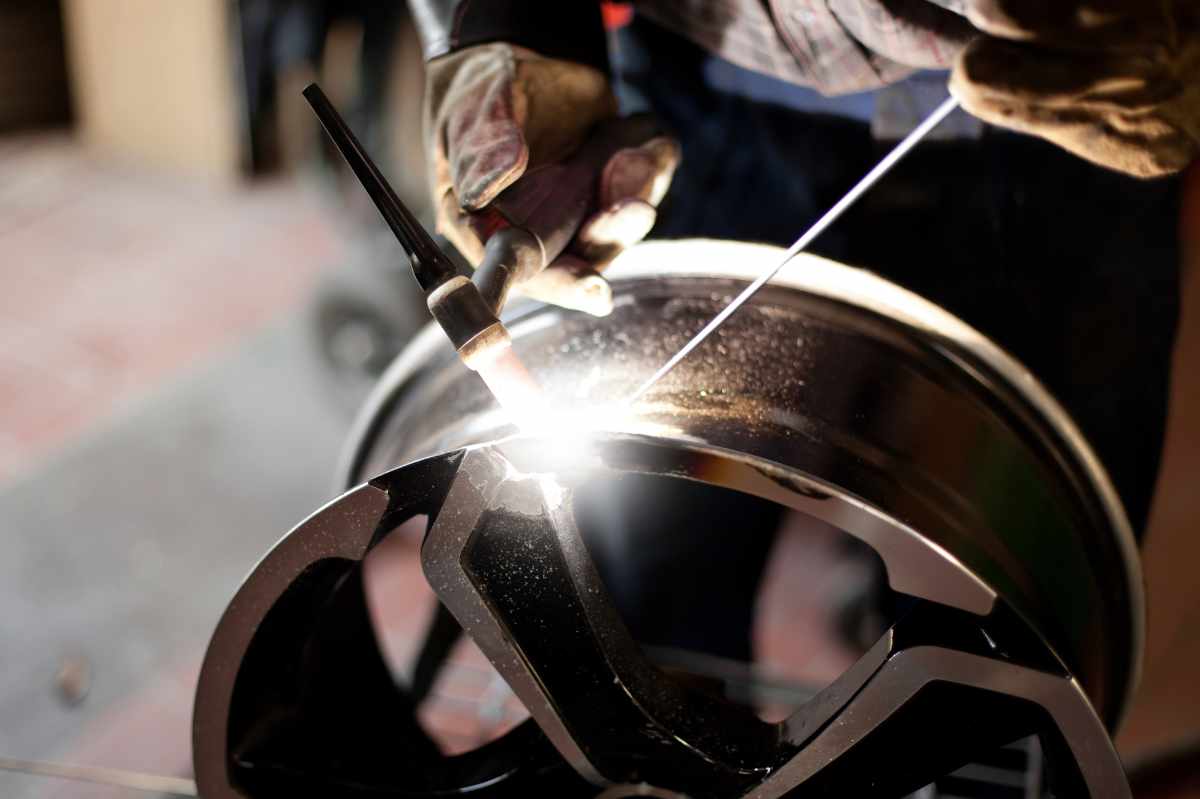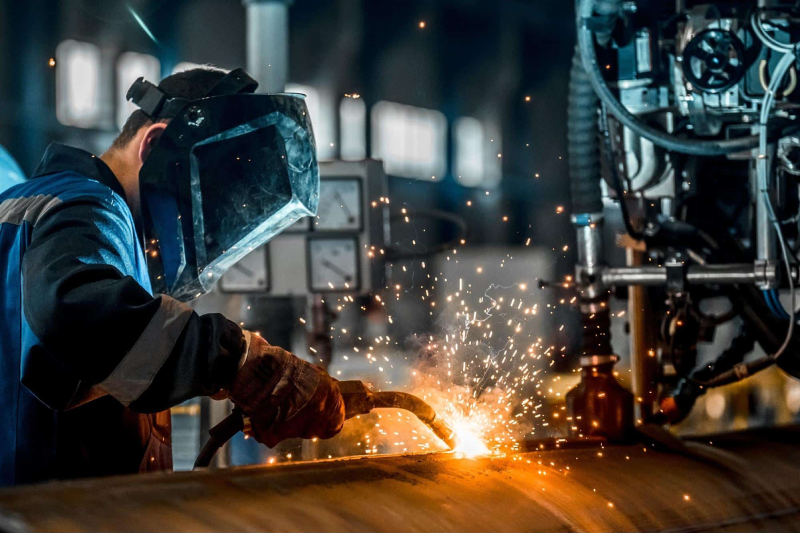Usual Welding Repair Service Issues and How to Address Them Efficiently
Welding fixings typically encounter a variety of problems that can jeopardize the stability of the last item. Common troubles consist of poor infiltration, porosity, and imbalance, to name a few. Each problem presents special challenges that need particular strategies for resolution. Recognizing these problems is vital for welders intending to boost their skills and end results. This discussion will explore these usual welding repair work concerns and efficient methods to address them.
Insufficient Infiltration
Inadequate infiltration happens when the weld metal fails to fully fuse with the base material, causing weak joints and possible architectural failures. This problem typically comes from not enough warmth input, inaccurate electrode angle, or improper welding speed. Welders may encounter poor infiltration due to a mistake of the required criteria for a certain product density or kind. Furthermore, contamination on the base product's surface can hinder effective bonding, exacerbating the trouble. To deal with insufficient penetration, welders should assure suitable setups on their devices and maintain a clean work surface area. Regular assessment of welds is recommended to recognize any type of deficiencies early, allowing for timely modifications and the avoidance of endangered architectural honesty in welded assemblies.
Porosity
Porosity is a typical flaw in welded joints that manifests as tiny gas bubbles caught within the weld metal. This problem can compromise the honesty of the weld, resulting in minimized stamina and possible failure under tension. Montana Mobile Welding and Repair Belgrade Fabrication. Porosity generally develops from contamination, wetness, or improper welding techniques, which enable gases to get away into the liquified weld pool. To deal with porosity, welders must assure proper surface area preparation, keep a clean workplace, and use ideal welding parameters. Additionally, picking the appropriate filler product and securing gas can reduce gas entrapment. Regular assessment and testing of welds can help determine porosity early, assuring timely restorative actions are taken, consequently maintaining the high quality and integrity of the welded structure
Imbalance
Misalignment in welding can emerge from different aspects, including improper arrangement and thermal development. Understanding the origin causes is important for efficient resolution. A number of improvement methods are offered to straighten elements and guarantee structural integrity.
Root causes of Misalignment
Welding imbalance often stems from a selection of underlying concerns that can compromise structural honesty. One primary reason is incorrect fit-up of parts prior to welding, which can bring about gaps and uneven surfaces. Variations in thermal growth throughout the welding process can also cause distortion, specifically if the materials being joined have various coefficients of growth. Additionally, insufficient securing and fixturing might fall short to hold components securely in location, bring about movement throughout welding. Inadequately maintained equipment, including welding equipments and tools, may present disparities in the weld grain, further adding to imbalance. Finally, operator error, coming from not enough training or experience, can likewise play a substantial role in producing misaligned welds.
Modification Techniques Offered
Addressing imbalance properly calls for a combination of restorative techniques tailored to the specific concerns handy. One typical method is the use of fixtures or jigs to hold components in the proper placement during welding, guaranteeing regular alignment. Furthermore, preheating the materials can help in reducing distortion and improve fit-up. For considerable misalignment, mechanical adjustment techniques, such as making use of hydraulic jacks or clamps, can be utilized to fix the placement before welding. Post-weld warmth treatment may additionally be necessary to eliminate tensions brought on by misalignment. Careful examination and change during the arrangement phase can prevent imbalance concerns from coming to be significant issues, advertising a smoother welding process and boosting overall structural stability.
Distortion
Distortion is a typical difficulty in welding that can arise from different factors, including unequal home heating and cooling. Recognizing the causes of distortion is essential for applying efficient prevention strategies. Resolving this problem not just boosts structural stability yet likewise improves the total high quality of the weld.
Causes of Distortion
When based on the extreme warmth of welding, products often go through modifications that can result in distortion. This sensation primarily arises from thermal development and tightening during the welding process. As the weld location heats up, the product increases; upon cooling, it gets, which can produce internal anxieties. In enhancement, uneven home heating across a workpiece can worsen these stresses, leading to warping or flexing. The kind of material also plays a considerable role; steels with varying thermal conductivity and coefficients of growth might react in different ways, resulting in uncertain distortions. Bad joint style and inadequate fixturing can contribute to misalignment throughout welding, enhancing the probability of distortion. Comprehending these causes is important for efficient welding fixing website link and prevention strategies.
Prevention Techniques
Reliable avoidance methods for distortion throughout welding concentrate on managing heat input and ensuring correct joint design. Maintaining a constant warm input aids to decrease thermal development and contraction, which can cause distortion. Utilizing techniques such as preheating the work surface can additionally decrease the temperature level gradient, advertising consistent home heating. In addition, choosing proper joint styles, such as T-joints or lap joints, can boost stability and decrease stress and anxiety concentrations. Implementing appropriate fixturing to protect the workpieces in place even more help in maintaining alignment during the welding procedure. Finally, staggered welding series can distribute warm more equally, stopping localized distortion. By applying these methods, welders can considerably decrease the likelihood of distortion and improve the total top quality of their welds.
Splitting
Cracking is an usual issue encountered in welding repairs, commonly resulting from numerous elements such as inappropriate air conditioning prices, product choice, or inadequate joint prep work. The occurrence of splits can greatly compromise the integrity of the weld, bring about potential failures throughout procedure. To resolve this issue, welders need to initially evaluate the origin, guaranteeing that products work and properly selected for the details application. Furthermore, regulating the cooling rate during the welding procedure is essential; rapid air conditioning can generate stress and lead to cracking. Appropriate joint style and preparation likewise contribute to decreasing the risk. Applying these methods can boost weld top quality and resilience, ultimately minimizing the probability of fracturing in finished weldments.

Insufficient Blend
A considerable concern in welding repairs is insufficient blend, which occurs when the weld steel does not appropriately bond with the base product or previous weld passes - Montana Mobile Welding and Repair Belgrade Fabrication. This issue can result in weak points in the joint, potentially jeopardizing the integrity of the welded framework. Variables adding to insufficient combination consist of inadequate warmth input, inappropriate welding method, and contamination of the surfaces being signed up with. To resolve this problem successfully, welders ought to assure appropriate pre-weld cleansing and surface area preparation, in addition to change their welding parameters to achieve adequate infiltration and blend. Regular assessment during the welding process can also aid identify incomplete combination early, enabling timely restorative steps to boost the total top quality of the weld
Overheating
While welding see this here fixings can boost architectural honesty, overheating offers a substantial obstacle that can result in product degradation. Extreme warm throughout welding can modify the mechanical residential properties of metals, leading to minimized toughness, enhanced brittleness, and bending. This phenomenon is especially crucial in high-stress applications where architectural integrity is vital. Identifying getting too hot can involve visual examinations for discoloration or distortion, in addition to monitoring temperature level throughout the welding procedure. To alleviate the threats related to overheating, welders ought to utilize appropriate techniques, such as managing heat input, adjusting travel rate, and making use of appropriate filler products. Furthermore, carrying out pre- and post-weld heat therapies can assist recover material residential properties and enhance the overall quality of the repair, making certain lasting efficiency and security.
Often Asked Concerns
What Are the Usual Indicators of a Welding Issue?

Just How Can I Evaluate My Welds for Top quality?
To examine welds for quality, one can use aesthetic examinations, ultrasonic screening, and radiographic approaches. Each technique assures architectural integrity, determines defects, and verifies adherence to specified standards, eventually improving the reliability of the welded joints.
What Safety and security Precautions Should I Take While Welding?
When welding, one need to focus on security by using proper individual protective tools, guaranteeing proper ventilation, protecting combustible products away, preserving a tidy office, and recognizing environments to stop crashes and injuries.
Can I Fix a Weld Without Redoing the Entire Joint?
Fixing a weld without renovating the entire joint is feasible, depending on the damages (Belgrade). Strategies such as grinding, adding filler product, or utilizing a welding process can properly resolve certain imperfections while maintaining the surrounding framework
What Tools Are Vital for Efficient Welding Repairs?
Vital devices for efficient welding repairs consist of a welding maker, cable brush, mill, protective gear, clamps, and filler materials. Each device plays an essential role in ensuring top quality and security during the repair process. Porosity commonly occurs from contamination, dampness, or inappropriate welding techniques, which permit gases to leave into the liquified weld swimming pool. Badly conserved equipment, consisting of welding equipments and devices, may present disparities in the weld bead, further adding navigate here to misalignment. When subjected to the extreme warmth of welding, products often undergo modifications that can lead to distortion. Cracking is an usual problem come across in welding repair services, typically resulting from different factors such as inappropriate cooling prices, product option, or inadequate joint preparation. A substantial issue in welding repair services is incomplete blend, which occurs when the weld metal does not adequately bond with the base product or previous weld passes.